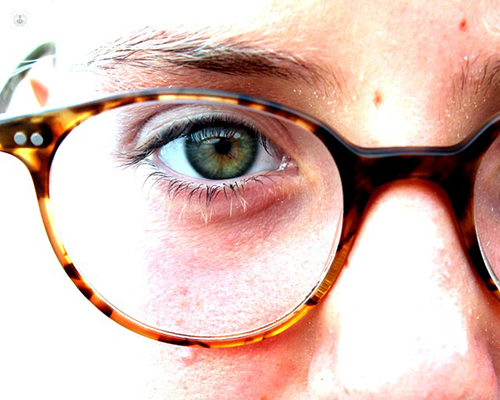Modern cataract surgery is so successful that in the majority of cases, it’s driven by patient demand. Some patients will want cataract surgery at a very early stage because they wish to reduce their requirement for wearing glasses.
Others, however, will prefer to hold off on having surgery until they are really struggling, which means it’s a very personal decision as to when cataract surgery is carried out. The usual driver is blurred vision to the extent where the patient is happy to go into hospital to have the surgical procedure.
Here, one of our leading ophthalmologists Mr Vaughan Tanner explains the success rate of the procedure.

What is a cataract?
A cataract is an opacity of the lens within the eye, which upsets the focusing mechanism and leaves patients usually complaining of blurry vision. The cornea at the front of the eye acts as a clear window, allowing the light through. The lens sitting behind the iris is where a cataract develops. Light rays normally focus by the cornea through the pupil onto the lens, which then focuses light onto the retina.
If the opacity lies within the lens, it is not able to focus light and the image is blurred. Patients complain of difficulty with spectacles, difficulty reading road signs or reading small print, or glare off bright lights.
How does an ophthalmologist perform cataract surgery?
Modern microincision cataract surgery is carried out by making incisions on the cornea to allow access through the pupil to the lens. The incisions are around 2mm in length, which allows them to be self-sealing so that no sutures are required. The eye recovers very quickly because of the micro incisions. As a result, vision is usually very good within a few days.
The cataract is removed and then an artificial lens is inserted into the eye, which is obviously not to scale. The artificial lens usually consists of a central optic which takes the place of the natural lens and focuses the light, together with these legs, which spring against the wall of the eye and hold the artificial lens in place. The majority of cataract operations are carried out using phacoemulsification (or ultrasound) power to break up the lens, allowing its removal through the small incision.
What’s the risk of cataract surgery?
There’s a very low risk of retinal detachment following cataract surgery and for the majority of patients that shouldn’t be a major concern. The most serious risk following an eye operation is an infection and that’s about 1 in 1000.
Retinal detachment, if it happens, can usually be treated surgically and is more frequently found in those patients who are very short-sighted and are at higher risk of retinal detachment anyway due to their short-sight.
What’s the success rate of cataract surgery?
As eye surgeons, we’re very fortunate in that we carry out one of the most common procedures in the world and also one of the safest. The vast majority of patients have completely uneventful cataract surgery as a day case procedure often under just anaesthetic drops.
There is, of course, a small risk as there is with any surgical procedure and if you added all these risks up, there’s probably about a 1% chance that you will be very unhappy with your outcome following routine cataract surgery.
What are the results of cataract surgery?
The vast majority of patients have reasonable vision the following morning after their cataract surgery. The advantage of the very small incisions that we now use is that there is a very rapid recovery. Most people would not require any painkillers at all maybe the occasional paracetamol.
Vision is pretty good within a few days and I usually tell my patients not to drive for a week and most tell me they are in fact driving within a week. You have to be comfortable with your eye following surgery and of course able to read the number plate.
Patients will usually be asked to use drops four times a day for four weeks after their operation. And I would normally see a patient two to three weeks after the initial procedure. Assuming all is well, they would then go and visit their optician for up to date spectacles around one month after the initial cataract operation.
